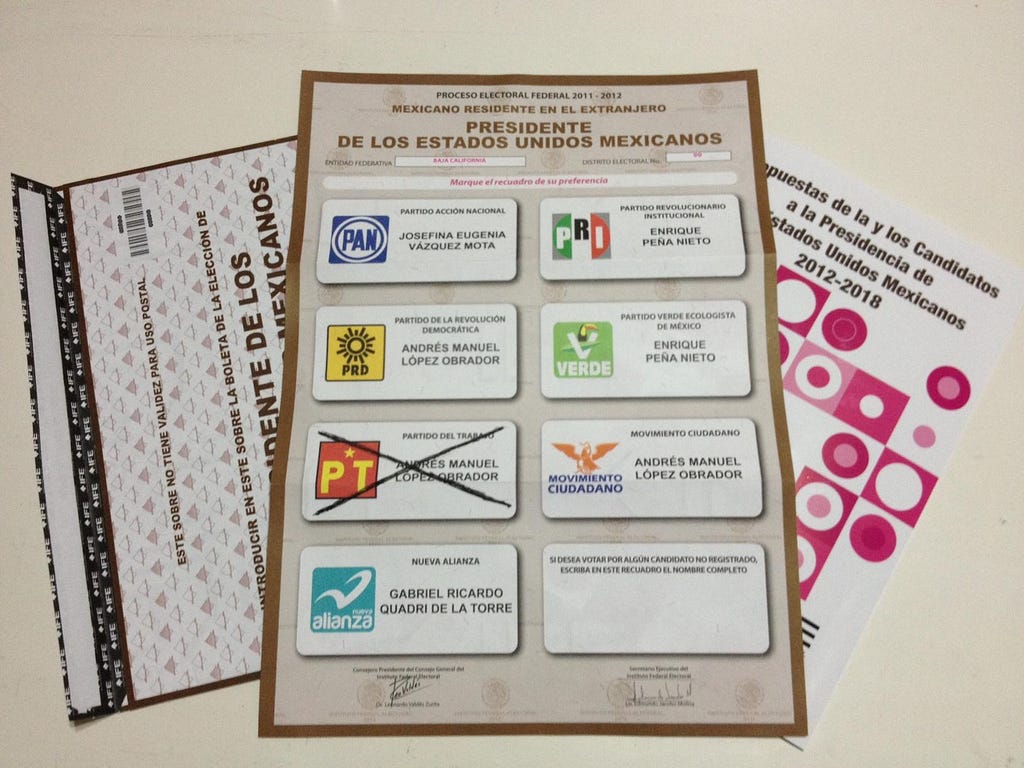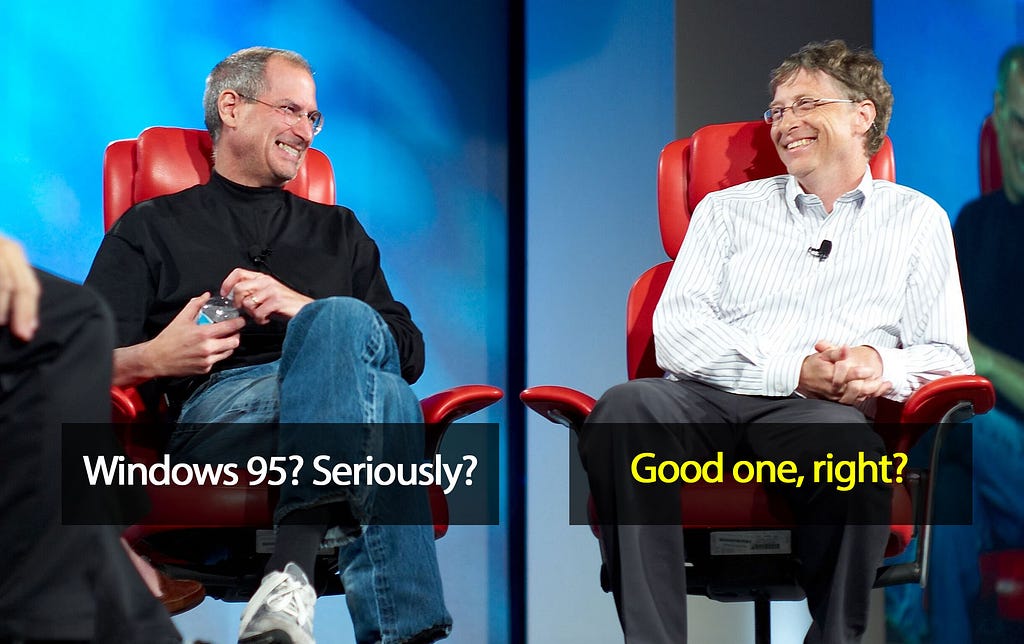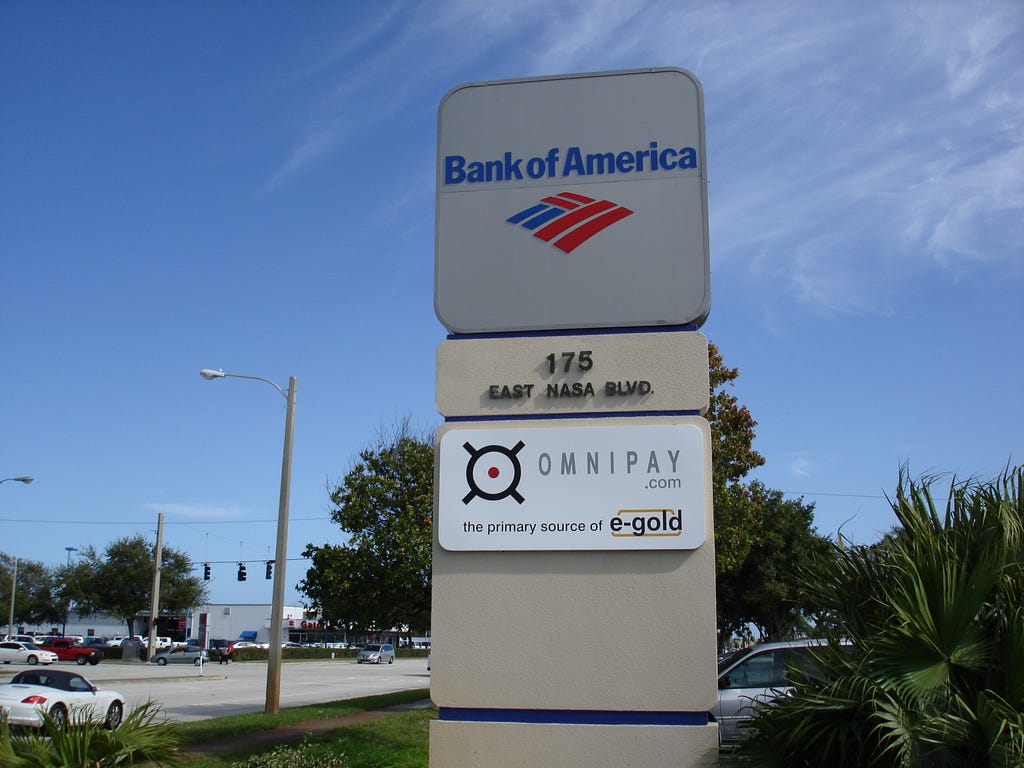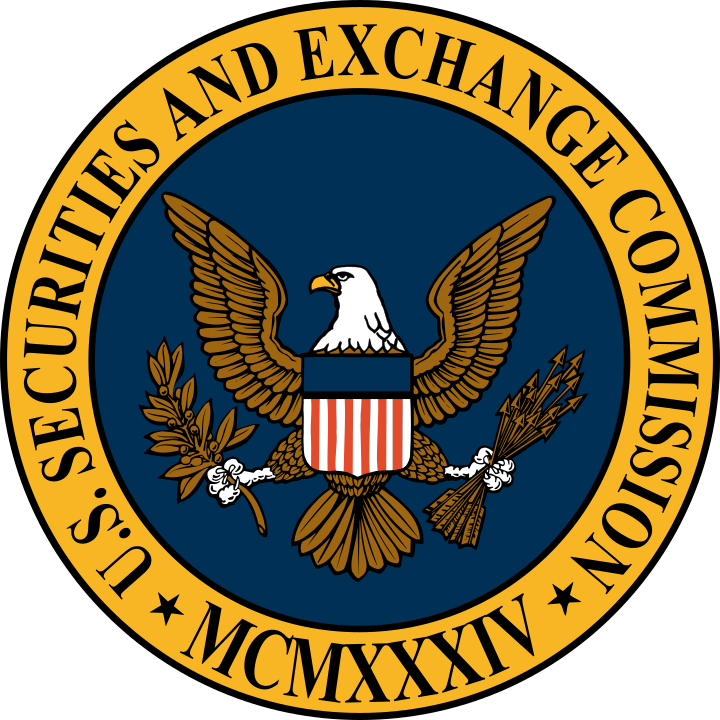Latest news about Bitcoin and all cryptocurrencies. Your daily crypto news habit.
 The fabric of digital dreams: Gold. Photo by Color Crescent on UnsplashWhat — you exclaim with disbelief. Cryptocurrencies before Bitcoin? Yes, indeed. Don’t get me wrong, Bitcoin was the first blockchain-based currency. But by far not the first purely digital money. That one has a colorful history of dreams, prosecution and failure. The misfits of cryptocurrencies delivered the lessons-learned for Satoshi to pull a John Doe on us.
The fabric of digital dreams: Gold. Photo by Color Crescent on UnsplashWhat — you exclaim with disbelief. Cryptocurrencies before Bitcoin? Yes, indeed. Don’t get me wrong, Bitcoin was the first blockchain-based currency. But by far not the first purely digital money. That one has a colorful history of dreams, prosecution and failure. The misfits of cryptocurrencies delivered the lessons-learned for Satoshi to pull a John Doe on us.“One thing we are still lacking and will soon develop is reliable e-cash — a method by which money can be transferred from A to B on the Internet without A knowing B and vice versa”, Milton Friedman, economist in 1999.1
DigiCash: Nobody wanted digital money
 David Chaum at age 62. Source Wikipedia
David Chaum at age 62. Source Wikipedia
David Chaum is a 28-year-old Ph.D. student in computer science from the University of Berkeley, California when he publishes a scientific paper in 1983. He is the first to describe digital money. Chaum comes from a wealthy US-American family, is a brilliant mathematician and is appointed head of the cryptographic department of the Mathematical Institute in Amsterdam.
In his paper, he describes the key point that his digital money differs from credit card payments through anonymity. Users receive the digital currency from their bank, but then it is made anonymous. This allows the bank to see who has exchanged how much money, but not what it is used for.
How to make a cryptocurrency without Blockchain
Chaum uses cryptography to create a blind, digital signature to make money anonymous. A metaphor best explains what this signature is: We all know the postal vote by means of which we can vote without making our cross in the cabin on election day. In the case of the election card, the electoral authority must confirm that the right person has cast their ballot and, above all, does so only once. At the same time, the authority should not know what the person has voted for.
 A postal voting card in Mexico. By Lguweqaakljgh [CC BY-SA 3.0] from Wikimedia Commons
A postal voting card in Mexico. By Lguweqaakljgh [CC BY-SA 3.0] from Wikimedia Commons
It is, therefore, a question of confirming the process without knowing the content. The voter fills out the ballot paper, puts it in an envelope and seals it. The electoral authority receives the envelope and checks with the electoral roll if the process is correct. The authority then indicates this on the envelope. The voting list says that the person has voted correctly, on the envelope only that it is a correct vote without any link to the person. Thus the envelope is “blind” and the “signature” is written on the envelope by the electoral authority.
In Chaum’s digital money, we replace voting authority with bank and voting card with the amount of money. A user buys digital money from the bank, which the bank confirms. Then every unit of money — every coin — is put into a metaphorical envelope and thus made anonymous. The user can then carry out transactions. The bank knows from its signature that it is a real digital money unit, but not who uses it. This makes digital money anonymous.
David Chaum founds a company in 1989 and invents the virtual currency DigiCash. It enables the secure and convenient payment of goods and services on the Internet. This distinguishes DigiCash from conventional credit cards, whose use is quite insecure in comparison — even today.
It is ahead of its time because it should take another 10 years before DigiCash is accepted by banks and customers. For digital money to work, it needs a demand in the form of e-commerce, i.e. online trade, which only begins in the second half of the 1990s.
But even then DigiCash has a hard time. An article in Forbes sums it up as follows:
“A beautiful idea for a beautiful new world with one problem: nobody wants it. Not the banks, not the dealers and above all, not the customers. E-commerce is flourishing [1999, the author’s note], but as it turns out, the customer’s Mastercard and Visa are his preferred currencies.2”
Digital currencies like DigiCash have the same problem as almost every technological development in its infancy: they offer solutions to a problem that users don’t yet have. DigiCash’s advantage is anonymity, but customers just want to shop conveniently online. Of course, they prefer to use credit cards, as they have known them for years.
Chaum has the misfortune of the early bird, but that is added by incompetence. The Dutch magazine Next!3 gives Chaum 1999 a bad rep: All cryptographers are paranoid and David Chaum is an excellent cryptographer. His company is more like a psychiatric institution than a tech company. He negotiates a deal with the Dutch ING Bank for months, only to refuse to sign on the day of the joint signing of the contract.
“He was so paranoid that he always thought something was wrong,” says Raymond Stofberg, CFO of DigiCash until 1996: “There were eight ING people including the CEO and David just didn’t want to sign.”
Bill Gates wants to integrate DigiCash into every Windows 95 installation, but the alleged $100 million in Microsoft’s offer is not enough. Gates withdraws, as did the operators of the then most important Internet browser Netscape.
 Bill Gates (right) and a fan on DigiCash. Or not. By Joi Ito [CC BY 2.0], via Wikimedia Commons
Bill Gates (right) and a fan on DigiCash. Or not. By Joi Ito [CC BY 2.0], via Wikimedia Commons
Chaum’s managers’ mutiny and demand that he resign as CEO. He bends down and appoints two of the mutineers as new managing directors. He’s retiring. Shortly thereafter, the mutineers quarrel and most leave the company.
But despite these paranoid-chaotic conditions, investors continue to believe in the product. However, the end of DigiCash is being heralded by customers. Although e-commerce is growing worldwide, customers are not turning to DigiCash. Some do not believe that credit cards are unsafe and others are not convinced that this new type of money is safer. In 1999, the company goes bankrupt and the digital currency is mothballed.
DigiCash’s failure reveals weaknesses that future projects will eradicate: Chaum is a fan of patents and copyrights. It’s good for Chaum but bad for bringing his technology to the people. Eight years later Bitcoin will be open source. The inventor gives the technology to the whole world. On the one hand, it creates competition in the form of many imitator currencies, but it also increases interest and knowledge about the technology.
DigiCash depends on David Chaum. His errors reflect on the entire digital currency. The sum of all mistakes leads to Chaum’s product being buried and makes room for the next attempt.
e-gold: Pioneers die lonely
 The glory! e-gold Office sign. Source Wikipedia By TMatthew22
The glory! e-gold Office sign. Source Wikipedia By TMatthew22
1996 knows neither PayPal nor Bitcoin and has no relevant online shopping yet. But the times — they are a changing. After DigiCash, someone must be the next to try their hand at flourishing e-commerce. The oncologist Douglas Jackson and lawyer Barry Downey assume this role. Their idea: They put gold coins in a safe deposit box in Melbourne, Florida. Then they create a website where digital portions of these gold coins are sold. The shares are denominated in a new currency, which they call e-gold.
In the next four years, e-gold will break ground: the first digital payment system used by at least one million people. First non-credit card payment service that can be integrated into online shops and thus enables pure digital e-commerce.
Precious metal traders use it first, then online traders, auction houses, online casinos, political and non-profit organizations. Since E-Gold is divisible into thousandths of a gram of gold, Jackson and Downey create the first functioning micropayment system. You can use it to send your favorite blogger 10 cents as a thank you for the great article. This is not possible with credit cards and PayPal until this day because the transaction costs are too high.
Then other companies jump on the bandwagon and offer, for example, exchange services from foreign currencies to e-gold. At its peak, e-gold has a market capitalization of $2 billion.4 But its popularity is also increasing among hackers. The central systems of e-gold are not secure enough, they are hacked. Users are also unprotected by the notoriously insecure Windows and Internet Explorer. Many customers lose their deposits.
 The SEC: “Me eagle, you chicken!”. By U.S. Government [Public domain], via Wikimedia Commons
The SEC: “Me eagle, you chicken!”. By U.S. Government [Public domain], via Wikimedia Commons
Operators are getting a grip on these problems. However, they have no chance against the US authorities, even when they act in accordance with the law. First, a competitor requests for a money exchange license. The application is rejected on the grounds that “You do not need a license, as neither gold nor virtual gold is money”. The operators of e-gold are asking the tax authorities to check whether their business model is perhaps a legal transfer of money. Authorities confirm: No money transfer, no license required. Wonderful. Wonderful? Not at all.
The Patriot Act introduced by the USA after 9 September 2001 not only allows the suspension of many civil rights such as that to privacy. The USA — land of free trade — is retroactively changing the money transfer law and bringing Jackson and Downey to justice because they have no license. Tax authorities freeze gold reserves and most users leave the e-gold platform. Douglas Jackson accepts the prosecution’s offer: he should — pro forma — plead guilty to money laundering, then apply for a license and everything will be fine.
In 2008 he is sentenced to 300 hours of community service and a fine of 200 US dollars. He seeks a license and — what a surprise — is rejected. Reason: Sentenced criminals may not possess a money transfer license.
The story of e-gold is over, Jackson is ruined. Those who want to follow in E-Gold’s footsteps have learned a lot:
- Centralized management makes vulnerable to hackers
- Central administration is therefore no more secure than a bank or credit card company
- A monetary system based on gold may lead to state-run blackmail
- A company domiciled in a country may be at the mercy of changing legislation
- Founders who can be identified as real persons may be preventively arrested by the FBI
The person or persons around the pseudonym Satoshi Nakamoto also learned. Their invention Bitcoin has a market capitalization of 120 billion US dollars after nine years. And they have solved the above points. Since Bitcoin is a direct successor of DigiCash and e-gold, I want to close this story with the invention of Bitcoin itself.
The birth of Bitcoin
The public will hear about Bitcoin on 31 October 2008 at 8:10 Central European Time. Although “the public” is a little exaggerated. The metzdown.com website has a mailing list where anyone who enters their e-mail address can exchange information on cryptography. The public here consists of a few thousand computer nerds. A certain Satoshi Nakamoto sends a short mail to the mailing list starting as follows:
“ I’ve been working on a new electronic cash system that’s fully peer-to-peer (i.e. decentralized, translator’s note), with no trusted third party. (bank or government, translator’s note). (…) A purely peer-to-peer version of electronic cash would allow online payments to be sent directly from one party to another without the burdens of going through a financial institution. Digital signatures provide part of the solution, but the main
benefits are lost if a trusted party is still required to prevent double-spending. We propose a solution to the double-spending problem using a peer-to-peer network. “5
This is followed by further explanations and the download link to a white paper, a technical explanation paper.6 It is a short 9-page document and describes, how
- digital money transactions are processed,
- to determine the sequence of transactions using a digital date stamp,
- the public cash book is reconciled using a so-called proof-of-work concept in such a way that no fraud occurs,
- a worldwide network performs this reconciliation,
- the owners of matching computers are remunerated for their work,
- privacy is maintained and the system is still transparent and which code is used to repel hacker attacks.
All core functions that Bitcoin has today are described in these nine pages.
Who the hell is Satoshi Nakamoto?
 Not Satoshi Nakamoto. Source: Wikpedia.
Not Satoshi Nakamoto. Source: Wikpedia.
The white paper leaves no question unanswered, except this one: Who is Satoshi Nakamoto? A search on Google in 2008 does not reveal the person Satoshi Nakamoto. Two months before Nakamoto’s email, the Bitcoin.org domain is registered and the white paper is available for download. Usually, the owner of a domain can be searched in an international registration database (whois.int). But Bitcoin.org was registered through a service that disguises domain owners. Political activists, who must remain anonymous, but, also criminals like to use this service.
The only thing the cryptography community has found out (to date) is that there is no person named Satoshi Nakamoto. The name is a pseudonym. Is Nakamoto a man or a woman? Or is it even more than one person? It’s not even possible to determine the origin. Is Nakamoto from Japan, as the name suggests?
At the same time as Bitcoin is spreading, curious people are looking for the inventor(s). Some check the email data on the cryptography mailing list to find out at what times Nakamoto interacted with the list. For Japan the times are illogical, rather the east coast of the USA would fit, or also Great Britain.7 It is the beginning of a legend that is fueled by Satoshi himself. Nakamoto claims he was born on April 5, 1975. However, on April 5 (1933) US President Roosevelt signed special laws banning the hoarding of gold. 1975 is again the year when the US cut the very last link between the dollar and gold.8 Others analyze his name as a composition of the tech companies Samsung, Toshiba, Nakayama, and Motorola.
The language of the white paper is analyzed linguistically. It is partly formatted in British and partly in American English.
 Not Satoshi. But Jeff Garzik. Source: Jeff’s Medium profile.
Not Satoshi. But Jeff Garzik. Source: Jeff’s Medium profile.
Even programmers who have been involved in the development of Bitcoin software at an early stage have little to tell. “He was the oracle we contacted with questions about the system, but he didn’t really follow standardized programming practices,” says Jeff Garzik. Colleague and pizza lover Lazlo Haynecz reports: “I’ve exchanged e-mails with whoever Satoshi is. I always had the impression that he was not a real person. “9
Whoever Satoshi Nakamoto is, it can be assumed that he became rich through his invention: Cryptofan Sergio Lerner tracks every single transaction down to the very first one and develops a procedure to be able to assign the original account (even if not the name) to every bitcoin. There is still one million bitcoin (6 billion US dollars in August 2018) that have never been transferred. Most likely this heap belongs to Satoshi Nakamoto.10
But we skip a lot of history. Back in 2008, it takes three months to release version 0.1 of Bitcoin after the white paper has been published. Published means that some computers are equipped with the software for the decentralized ledger. Developers conclude from the software11 that Bitcoin was written by an academic who is not a trained programmer but has a lot of theoretical knowledge.
On January 3, 2009, the first 50 Bitcoins are “generated” out of nowhere, three days later the first transaction between Satoshi Nakamoto and developer and cryptography activist Hal Finney is carried out. The world takes no notice of this groundbreaking process. Enthusiasts can research the first transactions years later by tracing the transparent public ledger. You can’t read the names of the participants, but you can read the addresses that were involved.12
In October of the same year, there was an initial exchange rate. For 1 US dollar, you get 1,309 bitcoin. The price is calculated from the cost of powering a Bitcoin computer. In the following years, Bitcoin becomes better known. As more people buy this strange currency, its value increases. After all, you can only buy Bitcoin if someone else is willing to sell it. Therefore, a buyer must always offer a higher price than the last one traded. If more people buy Bitcoin than sell it, the price rises.
The rest is history.
 Not that famous Bitcoin Pizza. And not Satoshi Nakamoto. But a Pizza Napoli. By https://pizza.de/ [CC BY-SA 4.0], via Wikimedia Commons
Not that famous Bitcoin Pizza. And not Satoshi Nakamoto. But a Pizza Napoli. By https://pizza.de/ [CC BY-SA 4.0], via Wikimedia Commons
Sources
1 https://dealbook.nytimes.com/2014/01/21/why-bitcoin-matters/
2 https://www.forbes.com/forbes/1999/1101/6411390a.html
3 https://cryptome.org/jya/digicrash.htm
4 https://en.wikipedia.org/wiki/E-gold
5 http://www.metzdowd.com/pipermail/cryptography/2008-October/014810.html
6 http://www.bitcoin.org/bitcoin.pdf
7 https://www.reddit.com/r/Bitcoin/comments/18in3h/metzdowd_cryptography_mailinglist_archive/
8 https://www.diginomics.com/who-is-satoshi-nakamoto/
9 https://www.diginomics.com/who-is-satoshi-nakamoto/
10 https://www.wired.com/2013/12/fbi_wallet/
11 Compiled with Microsoft Visual Studio Compiled, no Command Line Interface
12 http://historyofbitcoin.org/
The Amazing Story of Cryptocurrencies Before Bitcoin was originally published in Hacker Noon on Medium, where people are continuing the conversation by highlighting and responding to this story.
Disclaimer
The views and opinions expressed in this article are solely those of the authors and do not reflect the views of Bitcoin Insider. Every investment and trading move involves risk - this is especially true for cryptocurrencies given their volatility. We strongly advise our readers to conduct their own research when making a decision.